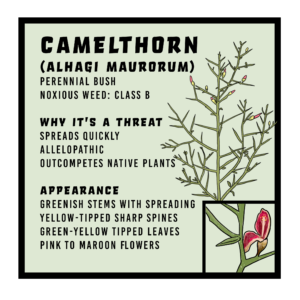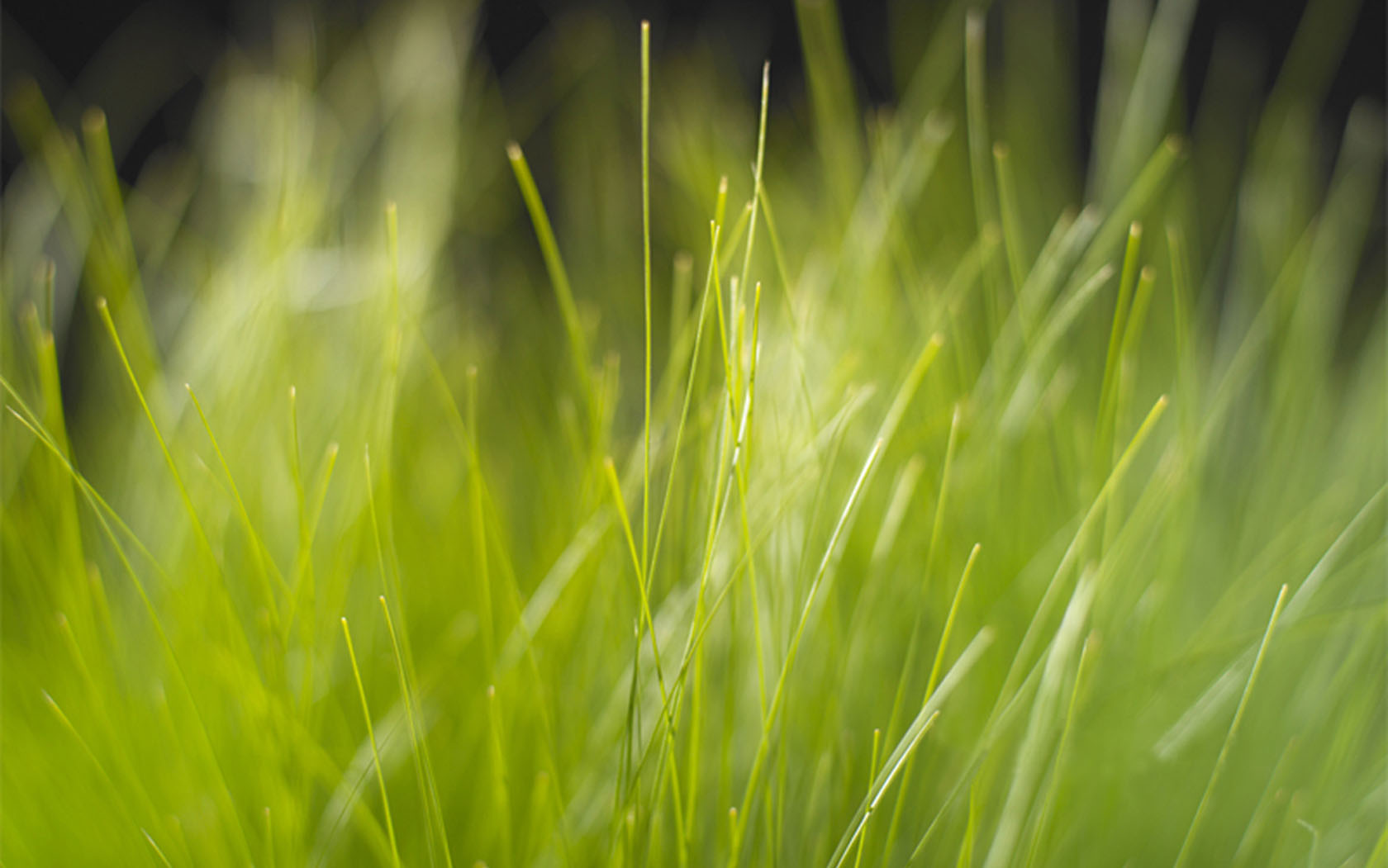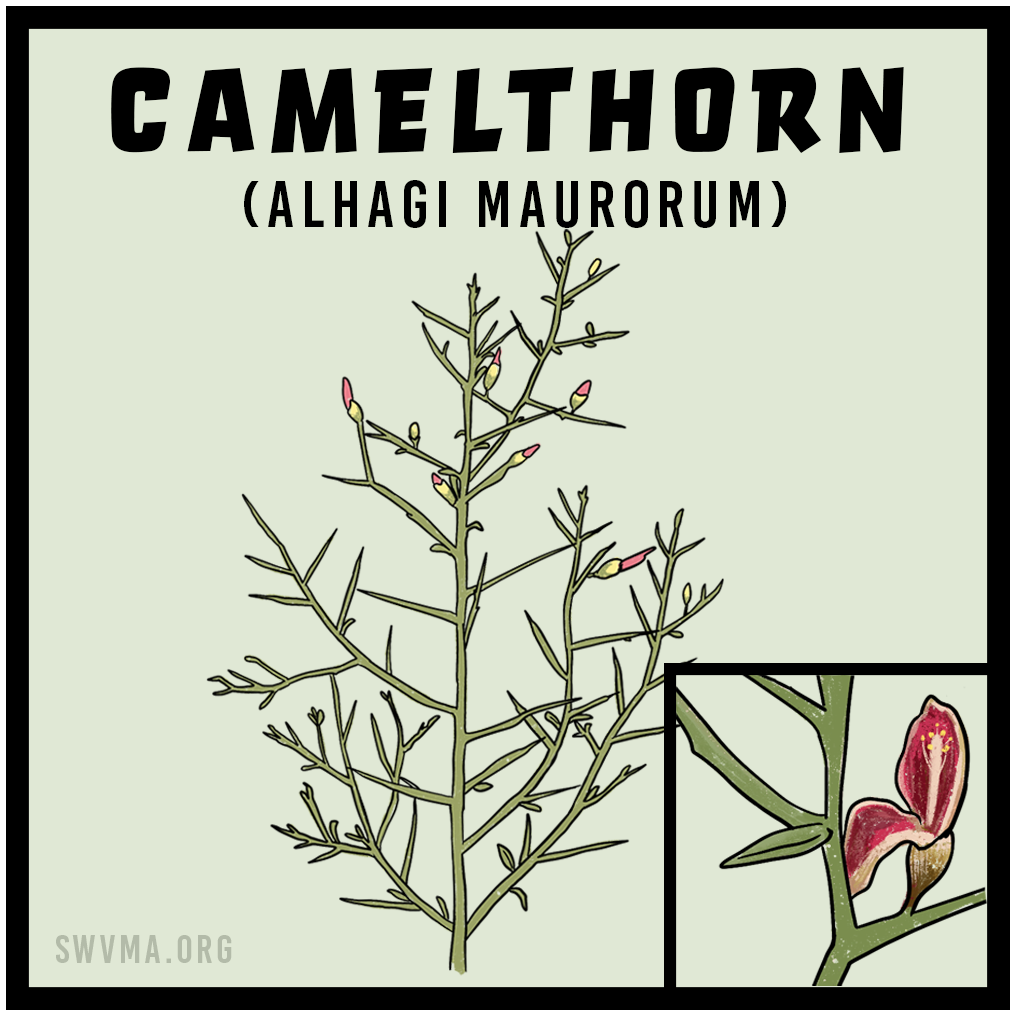 Camelthorn (Alhagi maurorum) is native to regions in Asia, including parts of the Middle East, and it has become an invasive species in various parts of the world, including the United States. It is considered problematic due to its aggressive nature and ability to form dense stands, displacing native vegetation and impacting ecosystems. Camelthorn is particularly resilient in arid environments, contributing to its invasive characteristics.
Camelthorn (Alhagi maurorum) is native to regions in Asia, including parts of the Middle East, and it has become an invasive species in various parts of the world, including the United States. It is considered problematic due to its aggressive nature and ability to form dense stands, displacing native vegetation and impacting ecosystems. Camelthorn is particularly resilient in arid environments, contributing to its invasive characteristics.
Managing Camelthorn involves a combination of preventive measures and control strategies. Prevention efforts focus on avoiding the introduction and spread of seeds, especially through human activities and equipment. Control methods may include manual removal, mechanical means such as cutting or mowing, and the application of suitable herbicides. Integrated pest management practices are often recommended to address the invasive tendencies of Camelthorn effectively.
For specific and detailed guidance on managing Camelthorn (Alhagi maurorum) in the Southwestern United States, please refer to the provided link on the USDA Forest Service website.

